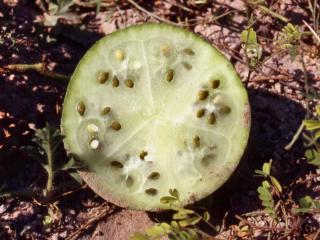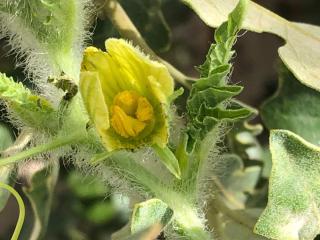

What is citron melon? Citrullus lanatus var. citroides, or jam melon, is a bland, gummy melon that is simply excellent for jams and jellies. 😋
Read also:
In this short read, discover a few quick facts about citron melon and a description of what the plant – and HUGE fruit – look like.
→ Related species: a medicinal mini-melon
Citron melon is an ancestor of today’s famous watermelon plant. It is a vine that crawls along the ground and up walls or fences. Here’s a short description:
 Fruits are similar to watermelon in size, sometimes larger. They’re either round like a basketball, or oval like a gigantic egg. Flesh inside is white or ivory-colored.
Fruits are similar to watermelon in size, sometimes larger. They’re either round like a basketball, or oval like a gigantic egg. Flesh inside is white or ivory-colored.It’s quite easy to grow citron melon. Since most varieties have been selected by local growers over centuries, they tend to be well-adapted to their local environment.
Let’s take a look at each part of the plant and get to know it better.
It has solitary flowers with petals that are large and yellow which measures around an inch across (20-30 millimeters).
 Female flowers are identified thanks to their pistils and ovary. The ovary is a swelling under the flower. It later turns into the fruit.
Female flowers are identified thanks to their pistils and ovary. The ovary is a swelling under the flower. It later turns into the fruit.Pollinators are the usual in the garden:
In some settings there might not be enough pollinators. It’s always possible to hand pollinate citron melon.
Stems will easily grow very long, up to a dozen feet (4 meters).
Leaves, though very wide, aren’t round. They’re like a large hand with frills around the fingers. They stand up at the end of a long stem (or petiole). All together, they form a bush that reaches knee height.
These crops will cover neighboring plants and climb up shrubs if there are any nearby. They use tendrils to lock on to twigs, branches, or anything they can use to climb.
The root system of citron melon is incredibly dense. Citron melon is an excellent vegetable for growing in dry areas, since it is used to searching for water on its own.
Being such a resilient and self-caring plant, it’s among the easiest types of melon to grow.